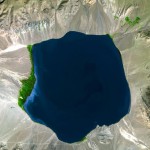Uvs Nuur Basin
Archaeology »
Heritage sites»
Uvs Nuur Basin
Location
Zavhan Aimag
Country
Mongolia
Year of Research
2003
Culture
The Uvs Nuur Basin (1,068,853 ha), is the northernmost of the enclosed basins of Central Asia. It takes its name from Uvs Nuur Lake, a large, shallow and very saline lake, important for migrating birds, waterfowl and seabirds. The site is made up of twelve protected areas representing the major biomes of eastern Eurasia. The steppe ecosystem supports a rich diversity of birds and the desert is home to a number of rare gerbil, jerboas and the marbled polecat. The mountains are an important refuge for the globally endangered snow leopard, mountain sheep (argali) and the Asiatic ibex.The closed salt lake system of Uvs Nuur is of international scientific importance because of its climatic and hydrological regimes. Because of the unchanging nature of the nomadic pastoral use of the grasslands within the basin over thousands of years, current research programmes should be able to unravel the rate at which Uvs Nuur (and other smaller lakes within the basin) have become saline (and eutrophic). These processes are on-going and because of its unique geophysical and biological characteristics, the basin has been chosen as an IGBP site for monitoring global warming.

